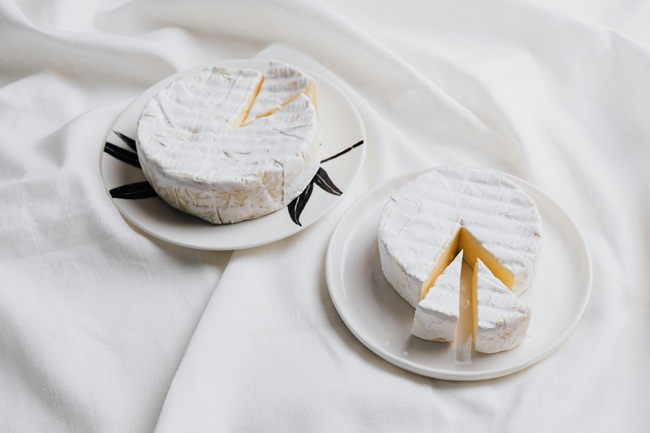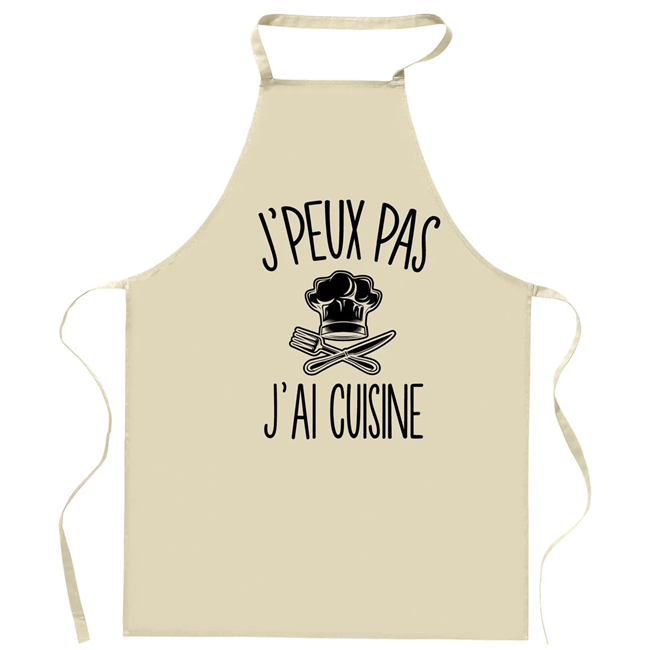French Cheese Faux Pas: Never Take This Fromage to a Friend’s Home
When I was working as a professional chef in the Loire Valley and living in the Côteaux du Layon wine-growing area, sadly I didn’t have time to accept invitations to dinner parties with friends. Dommage.
Nor did I attend their long, languorous Sunday lunches spent around the table, sipping local wines made from the delicious, flowery chenin grape (like those from Domaine Mosse) and tasting delicious long-cooking French classic dishes like boeuf bourguignon.
Non. Back then, you’d have found me in a restaurant kitchen, finishing the Sunday lunch service with the big weekly cleanup that all the chefs performed, from lowly apprentice to chef-owner. The apprentices would scrub the floors with stiff-bristled brushes while the rest of the brigade would challenge them to push the brushes back and forth hard enough so they would sound like cigales, or Provençal cicadas, singing.
I’d either be hosing down the shelves of the walk-in, or you’d have found me madly shining the still-scorching flattop with fine-grained sandpaper. “Allison, when you’re done, you should be able to use that flattop like a mirror!” the chef-owner would bellow. I’d scrub even harder.
Those were the days…. The ones I’d prefer not to think about now! Because guess what? It’s pretty cool to sleep late on Sundays while my 7-year-old twins occupy themselves quietly in their room with their vast array of plush animals. Or to be invited to a weekend lunch at a friend’s home.
Etiquette dictates that when someone invites you to their home, you ask what you can bring. If your friend answers, “Oh, nothing, just bring yourselves!” then you can always take flowers or a bottle of wine. It can be indelicate to ask the host what you’ll be eating, so if choosing the right bottle is too difficult, Champagne is always a welcome gift.
When I asked my friend what to bring, I thought she, like many Parisians, might suggest dessert. But she answered “Apporte un fromage…” Now, you may know that the art of the euphemism is well developed in France. Translation? “Bring some cheese.” (Not just ONE cheese.)
Before leaving home that morning, I briefed my kids: we would go to the cheese monger’s and each of us would choose a cheese to take. I picked out an aged brebis, or ewe’s milk cheese. (Brebis is always underrated, and it’s one that I make sure guests try on my market tours.)
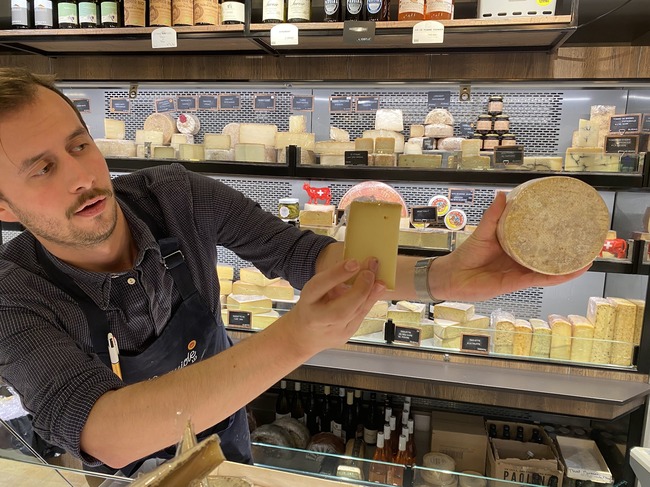
The cheese monger holding up tomme de Larzac, a ewe’s milk cheese from the Aveyron. Photo: Allison Zinder.
“Camembert!” my son pronounced happily.
“No! Wait. Are you serious? We can’t take camembert to lunch. No way. Just….non.”
I was horrified at the idea of taking camembert to our hosts, even though this cheese is among my favorites.
Meanwhile, my daughter, who has never met an unpasteurized cheese she didn’t like, chose an écrou du fromager. This cheese monger’s “bolt” is an outlier: made with fenugreek – an unusual spice to find in cheese – it takes on a deliciously nutty flavor when in contact with the creamy goat’s cheese.
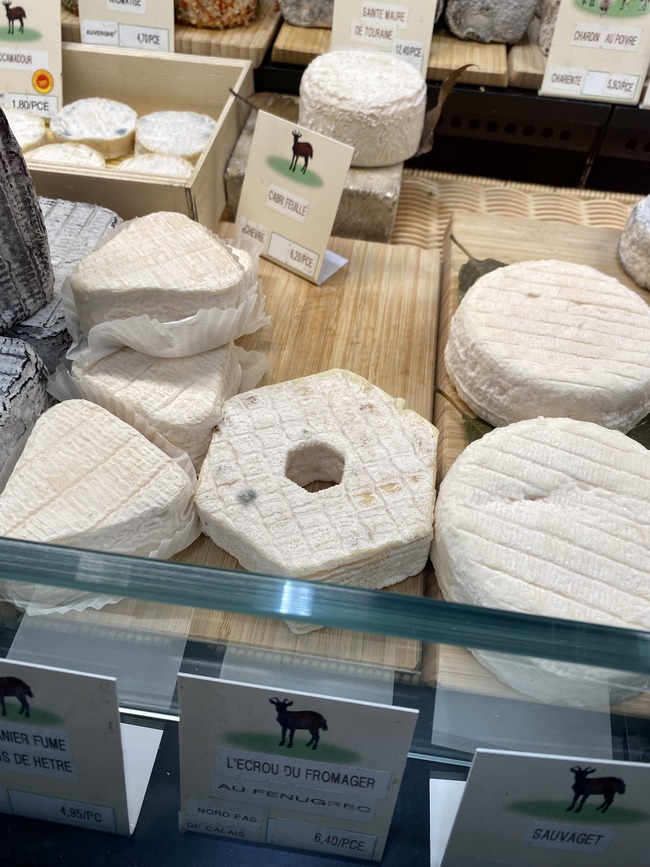
The écrou du fromager, or cheese monger’s bolt. Photo: Allison Zinder.
My son on the other hand is not a huge cheese fan. In fact, he wanted us to buy a famous spreadable supermarket “cheese” made with garlic and herbs. Mais non…. Pas possible. One real cheese he does like, however, is camembert.
But when my son made his choice, it posed a moral problem for me. I love camembert but instinctively knew that it just isn’t the right cheese to take to someone’s home. What was so wrong with his choice?
My reasoning is that it’s kind of like choosing a new toothbrush for someone. It’s just too personal. But a promise is a promise, and we bought the camembert.
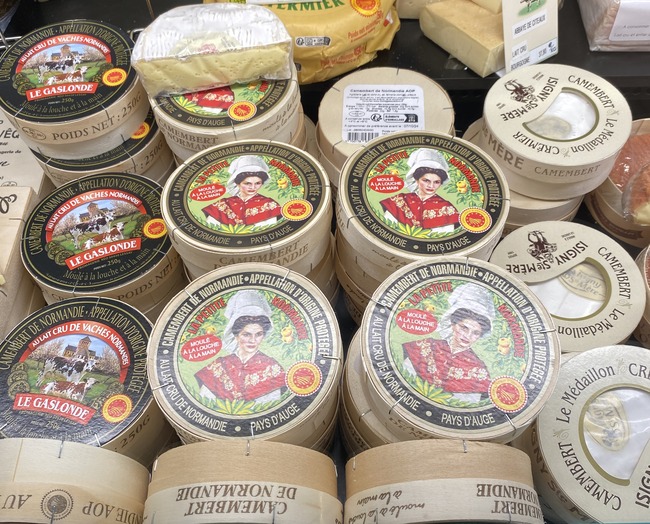
A selection of camembert at my local cheese monger’s. Photo: Allison Zinder.
The next day, I decided to poll my office mates. They represent some of the most gastronomic French regions — Burgundy, Normandy, and Brittany — and act as a kind of focus group for some of my French food quandaries. (And who doesn’t love having their personal French food focus group?)
At work one day, we gathered around the (lunch) table. And because Paris is synonymous with serendipity, one of my office mates just happened to be enjoying his lunch of mussels with a camembert sauce.
We engaged in the kind of passionate discussion the French love most, because nothing spurs debate here like food. I was assailed — in the best kind of way — with four people’s opinions, all at once, on taking camembert when invited to someone’s home. Here are the results of our discussion.
Firstly, the entire group told me it’s too common a cheese. Everyone has camembert in their fridge already – why add more? Guests are expected to bring something more daring, their own personal discovery of a little-known cheese. While no one knows exactly how many cheeses there are in France, the hexagone currently boasts somewhere between 1500 to 2000 cheeses (and counting).
You want to épater la galérie or stun your friends with a unique and original choice, or show them that you’re an amateur of cheese. (In French amateur doesn’t mean an amateur, but rather a lover, a fan of something. Amateur is etymologically related to aimer and amour, words we’re seeing a lot at the moment with the run-up to the Saint Valentin.)
When I spoke with cheese expert Jennifer Greco, she agreed that taking this highly odiferous cheese to a friend’s home is risky. After all, the slang word for camembert, claquos, is a witty reference to claquer (meaning either to eat or to stink) or une claque, a slap in the face, which is how you might feel after eating some. Jennifer has lived in Normandy – the home of camembert – where it’s also known as les pieds de dieu, or god’s feet. Whether your friends keep the cheese in the refrigerator or out on the countertop, it will fill the space with its not-so-subtle perfume.
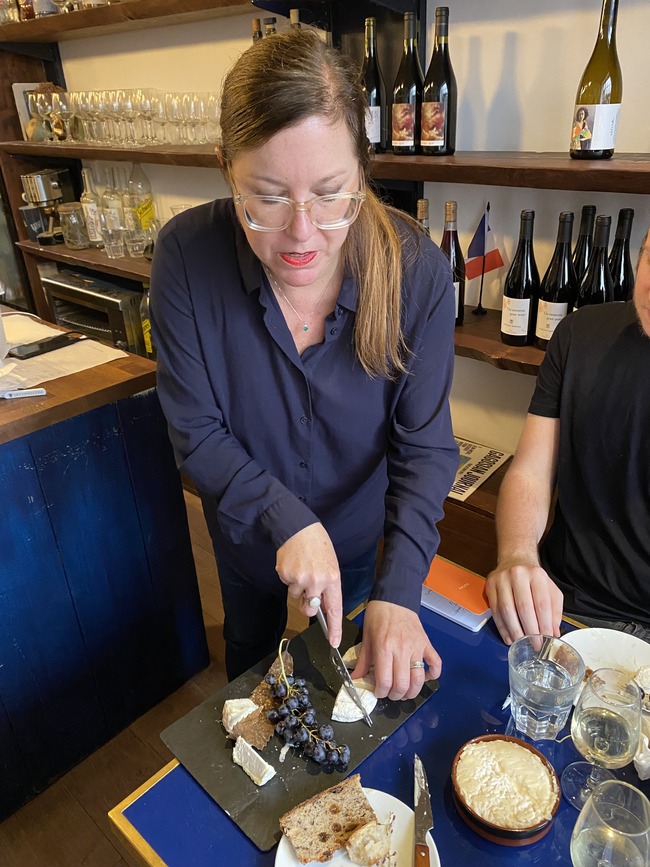
Cheese expert Jennifer Greco. Photo: Allison Zinder.
More importantly, my colleagues agreed with me: camembert is too personal. To give you an idea, here are some criteria for choosing one for friends should you decide to go down this perilous path:
- Do you know what texture they prefer? Maybe they like it plâtreux or plaster-like, even if the correct term is actually crayeux or chalk-like. Or perhaps they prefer a texture known as coulant, something that oozes and runs down the cheese board
- Do they have a favorite brand? (If you’re French, you definitely do.)
- Do they buy their cheese at the supermarket? If so, it will probably be Président or Le Rustique brands.
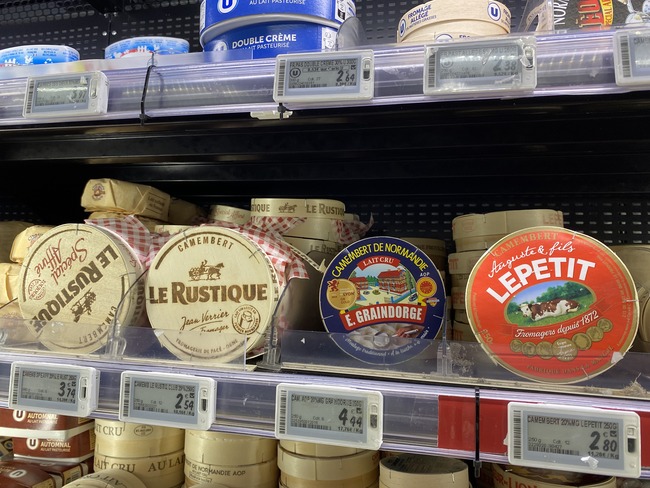
Favorite French brands of camembert from the supermarket. Photo: Allison Zinder.
AND if they buy cheese at the supermarché, are your friends the type of people who open the store’s refrigerator case AND the cheese’s wooden box so they can poke it – tâter le camembert – before pronouncing it fit to purchase?
(Note: The rule “You touch it, you take it” – tu touches, tu prends – only worked during the pandemic. Parisians are now fully back to their pre-pandemic ways.)
If you can answer all the above questions with confidence in your friend’s taste in camembert, you’re entitled to take it when invited. Otherwise? Please take a different cheese. After all, you’ve got potentially 1999 other ones to choose from.
Lead photo credit : Photo by Kaboompics/ Pexels
More in cheese, French Cheese, fromage
